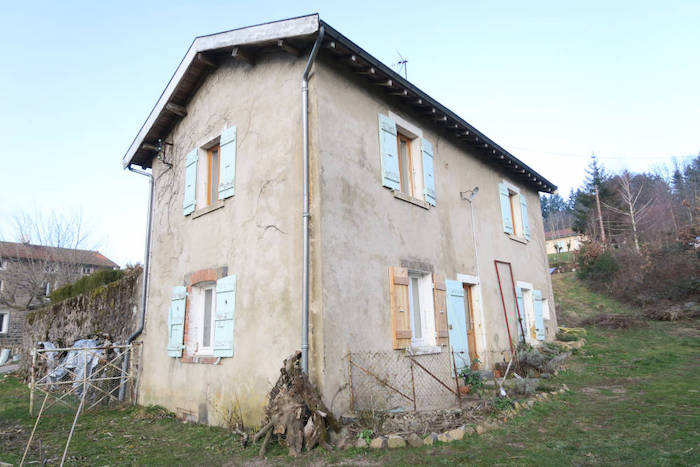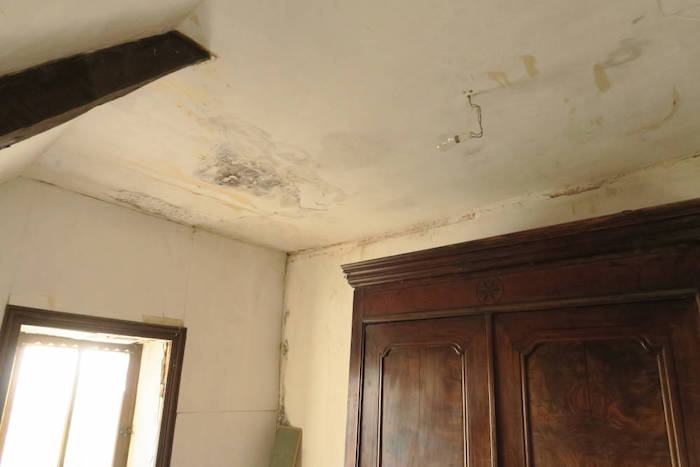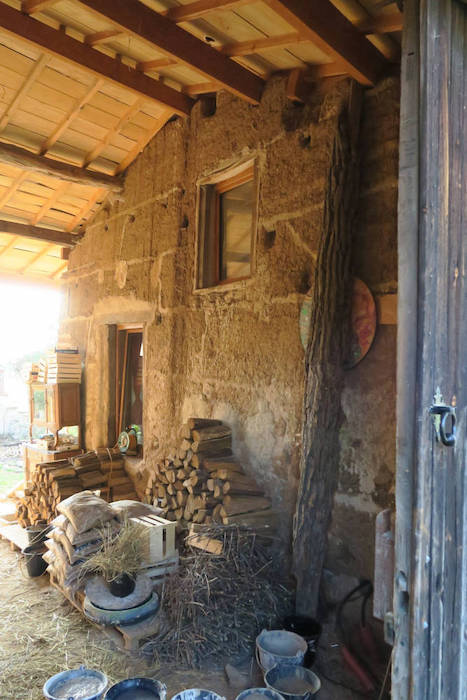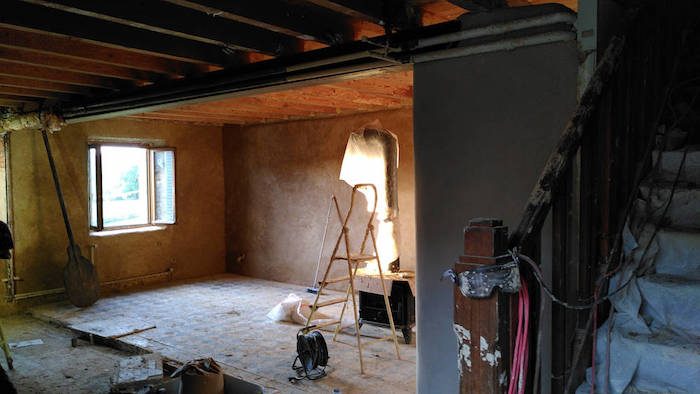
When I was a child, I remember visiting a lot of ancient buildings: fortified castles, châteaux, cathedrals, old farmhouses. I remember summer medieval festivals in ancient town centres, with typical half-timbering architecture and stylish gargoyles. I remember how fascinated I was as a child, with these old half-circled windows, which I imagined used to be that of a witch’s dispensary, or the old-fashioned book shop with shelves up to the ceiling and ladders to get to the volumes on top. I remember cold winter vacations, enjoying the snowfall outside, whilst also enjoying the warmth of the massive rocks on which I was seated, constituting the fire place.
The smell of centenarian (at least!) oak beams and furniture when entering these historically rich places. The freshness, dimmed light and feeling of relief when coming back inside during intense heat periods. The persistent warmth of the place after a night without heating in the middle of winter.
Thinking about it, a lot of my best childhood memories are around traditional old buildings. To me, they somehow have an aura of celebration, of gathering with people I love, of vacation, of something else. Some kind of door, to some kind of magical past, populated with mighty witches, dragons and fairies – with a wild and powerful nature background.
These unusual moments spent in such places got reinforced by the books, movies and cartoons I was given access to. Which in turn reinforced my imagination and strong feelings about traditional ancient buildings. Actually, modernity seemed kind of gross to me. I couldn’t, back then, reconcile what I thought belonged there and what people were doing.
It comes as no surprise then, that I have been holding dear, the dream of inhabiting a traditional ancient building for as long as I can remember. I cherish the idea of these vernacular (I could also speak about castles and stuff, if only they weren’t reserved to a selected few, money privileged) habitats as some kind of treasure chests, comfily nested among huge old trees, and a thriving natural surrounds. And, in the last decade, added to this whole dream the desire for restoring these places.

Obviously, the dream of inhabiting an old farmhouse or any such vernacular habitat has become more mainstream in the past years, especially since Covid.
When the pandemic first hit, I was living in a rather remote area: a small village, with an ageing permanent human population, high proportion of short term seasonal occupation, many abandoned stone houses.
Right after lockdown, the rush on purchasing traditional buildings began – and soon, there were no more old abandoned houses.
One could see that as a positive change. But actually, it was not.
Firstly, the city dwellers did not come to the countryside to learn another way of life or set root, rather to bring the city with them – which deserves an article of its own.
Secondly, because most started a renovation project in their newly acquired one-hundred-or-more-year-old farmhouse or barn. You know, renovation as in total-insulation-plasterboard-fiberglass-reinforced-concrete.
Which, of course, would be fine if applied to a modern, breeze block and cement based housing. But is definitely not ok with a traditional building, be it stone, rammed earth, half-timbering, cob or wood.

In the pursuit of my life-long dream of inhabiting an old stone house, I have learnt a little bit on how these buildings function – and thus how they should be treated. Especially past summer, when I met a 30+ years-old-experienced woman (the amazing Monique Cerro) at a vernacular habitat restoration workshop. I then continued following her on several community volunteering projects, learning the appropriate techniques and gestures of ecological restoration.
As you may have noticed, I make a difference (that’s Monique’s legacy) between restoration and renovation.
In renovation, there’s this idea of taking something old and turning it into something new, as in square angles, flat walls, windows anywhere (and, again, a lot of plasterboard!).

In restoration, on the contrary, there is the underlying idea of first trying to understand why and how the considered thing works (which is usually what we do as permaculture practitioners!), and then making our best effort to take it back to its best state. And, in the context of vernacular habitat, restoration implies ecological, as traditional buildings were built with natural resources readily available in the direct building’s environment.
So there is this inherent lack of understanding of the context in which the building was erected and with which it interacts that’s problematic with «standard» renovation projects – which leads to put windows and doors where they make no sense for example.
And there is this additional layer of directly contradicting the intrinsic functioning of these buildings – slowly but sureley killing them.
Ancient buildings, whatever the constructive material and tradition, need to breathe and sweat.
They are built with natural material, stone or earth, which are conductive to water but do not keep it inside. It is thus of primary importance to let this sweating/breathing process continue as initially intended.
They also move all the time ; being made of malleable materials that are sensitive to humidity and temperature changes, there is this ongoing movement of expansion and retraction, of rising then falling.

Using impermeable materials on the walls or floors alters the natural water circulation, which can cause the rotting of beams (that previously stayed healthy for a hundred or more years!), masonry damaging and cracking and other problems inherent to water concentration in a building. «Waterproofing» walls also leads to the usual condensation problem and high air humidity within the building – welcome dry rot fungus and mould!
Using rigid materials within the structure such as reinforced concrete, steel I-beams and all the cement applications contradicts the natural plasticity of the building and can, over the long term, cause important structural damages to the building – up to frontage fissuring.

The good news is that there are traditional techniques and materials to be used for proper ecological restoration and thermal correction of traditional buildings. Best even : they are not difficult to understand and apply and are fairly cheap. More on that in the following part of this article!













A great article & heartwarming too. Thank you for your efforts to save old buildings, yay !! My house is 93 years old. There are no termites at 6000 ft where i am in southern california. Which explains why all this wood is still here ! The foundation is rock and the whole house creaks all the time as the tempurature changes. Took me awhile to get used to that !!!
I am renovating a 113 year old stone cabin, in SE Kansas. I’m 71 and this is my first renovation experience. It had been abandoned for 50 years, the floor was gone , roof had caved in ,18 inch walls were beautiful, but above windows and doors starting to crumble. It is located on 5 wooded acres at the edge of a small town.
I found a stone mason that reworked the walls inside and out using lime and sand. Beautiful! I found tongue and groove flooring from a bank that was built in 1904. The 9 reclaimed windows are 100 years old.
I love the beauty and warmth of this old cabin… I could never live in a new house again.